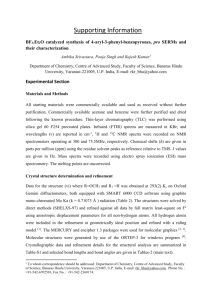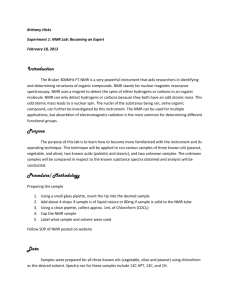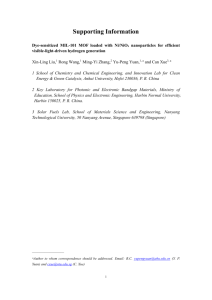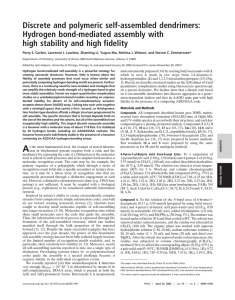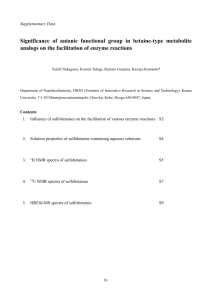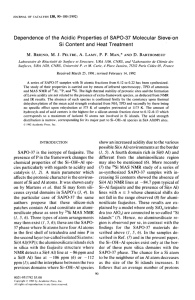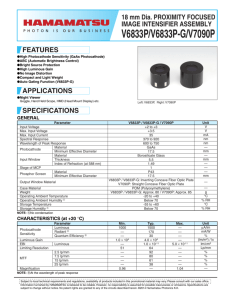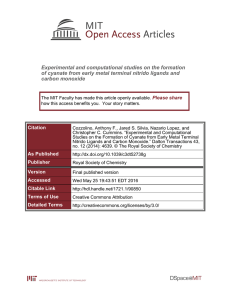Supplementary_material_rev
advertisement
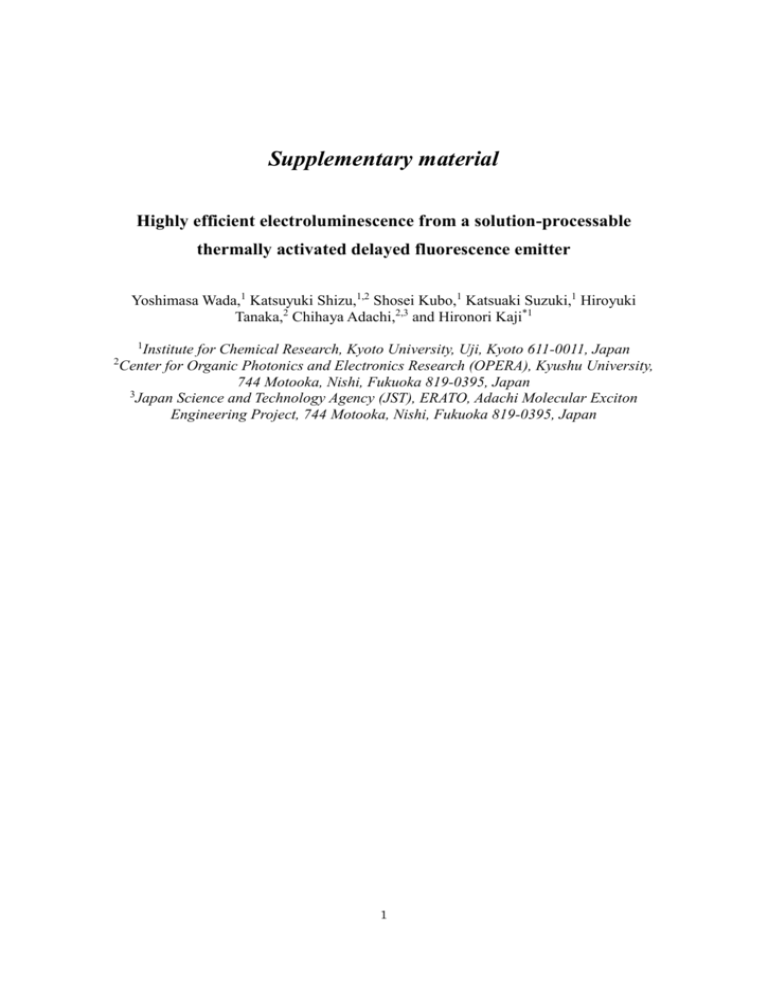
Supplementary material Highly efficient electroluminescence from a solution-processable thermally activated delayed fluorescence emitter Yoshimasa Wada,1 Katsuyuki Shizu,1,2 Shosei Kubo,1 Katsuaki Suzuki,1 Hiroyuki Tanaka,2 Chihaya Adachi,2,3 and Hironori Kaji*1 1 2 Institute for Chemical Research, Kyoto University, Uji, Kyoto 611-0011, Japan Center for Organic Photonics and Electronics Research (OPERA), Kyushu University, 744 Motooka, Nishi, Fukuoka 819-0395, Japan 3 Japan Science and Technology Agency (JST), ERATO, Adachi Molecular Exciton Engineering Project, 744 Motooka, Nishi, Fukuoka 819-0395, Japan 1 General procedures 1 H and 13C NMR spectra were recorded with a Bruker Avance III 800 MHz spectrometer (800 MHz for 1H NMR spectra and 201 MHz for 13C NMR spectra). Chemical shifts are reported in δ (ppm) using tetramethylsilane as an internal standard. NMR spectra are shown below. The reaction was carried out under Ar atmosphere. UV-Vis and PL spectra (Fig. 2) were measured using a UV-Vis spectrophotometer (UV-3150, Shimadzu, Japan) and spectrofluorometer (Fluoromax-4P, HORIBA, Japan), respectively. PLQYs were determined using an absolute PLQY spectrometer (Quantaurus-QY C11347-01, Hamamatsu Photonics, Japan). Transient PL decays of the solution (the inset figure in Fig.3) were detected using a fluorescence lifetime measurement system (Quantaurus-Tau C11367-02, Hamamatsu Photonics, Japan). The temperature-dependent transient PL decay of the doped film (Fig. 3) was measured using a fluorescence lifetime measurement system (Quantaurus-Tau C11367-01, Hamamatsu Photonics, Japan) and a cryostat (Oxford Instruments, Optistat DN2, UK). Current density–EQE characteristics (Fig. 4) were measured using an EQE measurement system (C9920-12, Hamamatsu Photonics, Japan) with a source meter (2400 Broad Purpose SourceMeter, Keithley, Japan). Synthesis and characterization 2,4,6-tris(4-(9,9-dimethylacridan-10-yl)phenyl)-1,3,5-triazine (3ACR-TRZ) of [Synthesis] 9,9-Dimethylacridan (501 mg, 2.40 mmol), 2,4,6-tris(4-bromophenyl)-1,3,5-triazine (355 mg, 0.649 mmol) potassium carbonate (889 mg 6.43 mmol), tri-tert-butylphosphonium tetrafluoroborate (66.5 mg, 0.229 mmol) and palladium(II) acetate (15.0 mg, 66.8 μmol) were dissolved in anhydrous toluene (40.0 mL) and stirred at 121 °C for 24 h. After termination of the reaction, the reaction mixture was poured into distilled water, and extracted with dichloromethane. The organic phase was dried over anhydrous magnesium sulfate, filtered and concentrated under reduced pressure. The crude product was purified by column chromatography on silica gel (chloroform/hexane = 2/3, Rf = 0.53). The obtained product was further purified by recrystallization from toluene to give 451 mg (0.48 mmol, 68%) of 3ACR-TRZ. 2 [NMR] 1 H NMR (800 MHz, CDCl3): δ = 9.08 (d, J = 8.56 Hz, 6H), 7.61 (d, J = 8.48 Hz, 6H), 7.50 (dd, J = 3.88, 1.52 Hz, 6H), 7.00–7.03 (m, 6H), 6.96–6.98 (m, 6H), 6.41 (dd, J = 4.10, 1.6 Hz, 6H), 1.73 (s, 18H); 13C NMR (800 MHz, CDCl3): δ = 171.5, 145.8, 140.6, 135.7, 131.7, 131.6, 130.5, 126.5, 125.4, 121.0, 114.3, 36.1, 31.3. 3 FIG. S1. 1H NMR spectrum of 3ACR-TRZ. FIG. S2. 13C NMR spectrum of 3ACR-TRZ. 4 FIG. S3. Arrhenius plot of the rate constant for reverse intersystem crossing (kRISC) from triplet to singlet excited states of a 16 wt% 3ACR-TRZ:CBP film. FIG. S4. Energy diagram of a device with the structure ITO/PEDOT:PSS/16 wt% 3ACR-TRZ:CBP/BmPhPhB/Liq/Al (left) and the thickness of each layer (right). The HOMO energy level of 3ACR-TRZ was estimated using a photoelectron spectrometer (Riken Keiki, AC-3) and the LUMO level was estimated from the HOMO level and the absorption edge (460 nm, Fig. 2) of the UV-Vis absorption spectrum of 3ACR-TRZ. 5 FIG. S5. Current density–luminous efficacy characteristics (left) and current density–voltage–luminance characteristics (right) of a solution-processed OLED. FIG. S6. Schematic exciton dynamics at stages of (a) charge recombination, (b) prompt fluorescence and (c) delayed fluorescence of 3ACR-TRZ-based OLED at electroluminescence. Subscripts of “ex” and “gr” represent excited state and ground state, respectively. 6



